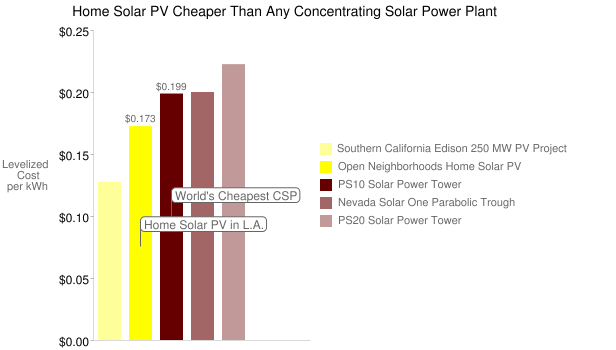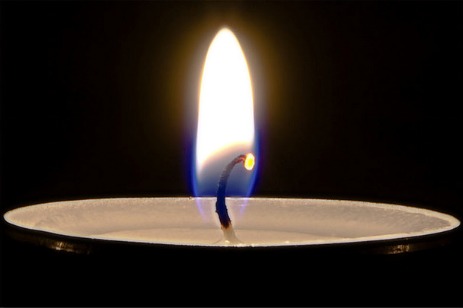This is part of a series on distributed renewable energy posted to Grist. It originally appeared on Energy Self-Reliant States, a resource of the Institute for Local Self-Reliance’s New Rules Project.
A residential rooftop solar PV system in Los Angeles, Calif., has a cheaper cost per kilowatt-hour of electricity delivered than the most cost effective, utility-scale concentrating solar power plant.
In 2010, a buying group called Open Neighborhoods openly advertised an opportunity to get a residential solar PV system installed for $4.78 per watt (not including any tax credits, rebates, or grants), a system that would produce approximately 1,492 kilowatt-hours (kWh) per year (AC) for each kilowatt of capacity (DC).
Based on the best available public information about the costs and performance of operational concentrating solar thermal power plants, the PS10 solar power tower — an 11 megawatt installation in Spain — has the lowest levelized cost of operation of any concentrating solar power plant that produces electricity. PS10 had an installed cost of $4.15 per Watt and produces 2,127 kWh per kilowatt of capacity.
At first glance, it would seem the concentrating solar power plant is cheaper. But it isn’t.
Due to higher operations costs and a higher cost of capital (8 percent rather than 5 percent) for a concentrating solar power plant, the levelized cost of the residential rooftop system (17.3 cents per kWh) is less than that of the power tower (19.9 cents per kWh).

And assumptions in the cost calculations actually favor the solar power tower. This analysis also does not include any transmission infrastructure or efficiency losses, either of which would increase the levelized cost of the concentrating solar power plant. It also did not include the lower price point offered by Open Neighborhoods for the residential PV system, which advertised a possibility of driving the price down to $4.22 per watt (driving the levelized cost down to 15.3 cents per kWh).
Distributed PV can be even cheaper than the Open Neighborhoods buying group. The Southern California Edison project, also featured in the chart, is another example of low-cost distributed solar PV, with the 250 MW project spread across commercial rooftops in 1-2 megawatt increments but still achieving large scale.
In some circles, it has been suggested that we can only achieve great strides and low cost in renewable energy with large-scale power plants.
In solar, at least, the data disagree.


